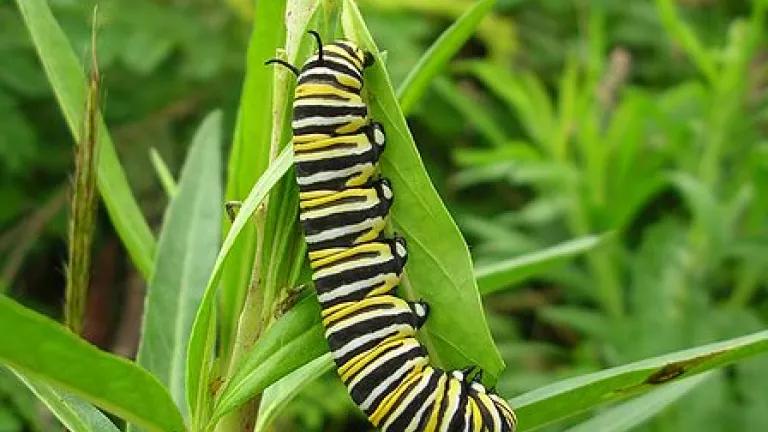Milkweed alone will not bring back the monarch butterflies (It's the pesticides, stupid)

Working on wildlife conservation policy is often an uphill battle. Federal and state agencies generally want to do the least amount of work possible to help conserve species. But every once in a while an issue comes along that everyone can get behind and there is suddenly an outpouring of support and resources at both the public and private level to address an urgent problem. The concerted (and ongoing) response to whitenose syndrome in bats is one of those examples and the recent efforts around the greater sage grouse is another. We are also now seeing an unprecedented response to the dramatic decline of monarch butterflies due to the loss of milkweed, a native wildflower that is the only food source for monarch caterpillars. From individuals planting milkweed in their backyards and schools, to federal agencies like the US Fish and Wildlife Service and the US Department of Agriculture investing millions of dollars to create additional milkweed habitat - there is an enormous effort underway to restore the population of monarch butterflies by planting pollinator habitat. The response is inspiring and heartening, but there is one major problem: All of the habitat in the world is not going to help the monarchs (or the bees and other pollinators) if it continues to be exposed to toxic pesticides.
It is clear that the loss of monarch butterflies and their milkweed habitat began with the invention of genetically engineered crops that are designed to be resistant to the herbicide glyphosate (also known as Roundup). But even as all of this new monarch habitat is being planted, glyphosate use continues to proceed unabated and in fact new weed control products that include additional herbicides, such as Dow's Enlist Duo which is a combination of glyphosate as well as 2,4-D, are being introduced to the market. A growing body of research is also demonstrating that any milkweed (or other flowering plant) that survives the application of herbicides on the edges of agricultural fields is likely to become contaminated by the widespread use of neonicotinoid pesticides. A USDA researcher (who recently filed a whistleblower complaint) published a study earlier this year showing that milkweed along agricultural edges can contain neonics at levels high enough to cause stunted growth to monarch caterpillars. Another study recently demonstrated that neonic concentrations were even higher in flowering plants outside of agricultural fields than in the crops that had been treated directly!
Clearly, whatever monarch habitat is not being eliminated by pervasive herbicide use is being exposed to pervasive insecticide use. We have got to address the issue of pesticides if we are going to solve the monarch butterfly crisis. Even Sally Jewell, the Secretary of the Department of Interior, who just visited the monarch biosphere reserve in Mexico said, "Our agricultural practices must be adapted. ... We have to look at our use of pesticides."
So while the Department of Interior, the Bureau of Land Management, the US Geologic Society and even the US Department of Agriculture are doing everything they can to make sure we increase the availability of milkweed on the landscape, the Environmental Protection Agency is sitting on its hands and refusing to take any steps to scale back the use of pesticides that are the primary cause of monarch decline -whether directly or indirectly. In fact, in EPA's response to our petition last year to re-examine the use of glyphosate in light of its impact on monarch butterflies, they wrote, " The agency at this time has not determined that glyphosate causes unreasonable adverse effects to the monarch butterfly." EPA has also refused to act on neonicotinoids despite overwhelming evidence of harm to bees and other pollinators including monarchs.
The massive effort to fund and plant monarch habitat is to be commended, but it could all be for naught if we do not also address the massive use of pesticides which are contaminating habitat far beyond the agricultural fields they are meant for. It's time for the EPA to get with the program and live up to its mission to safeguard human health and the environment from the pesticides that it is supposed to regulate.

